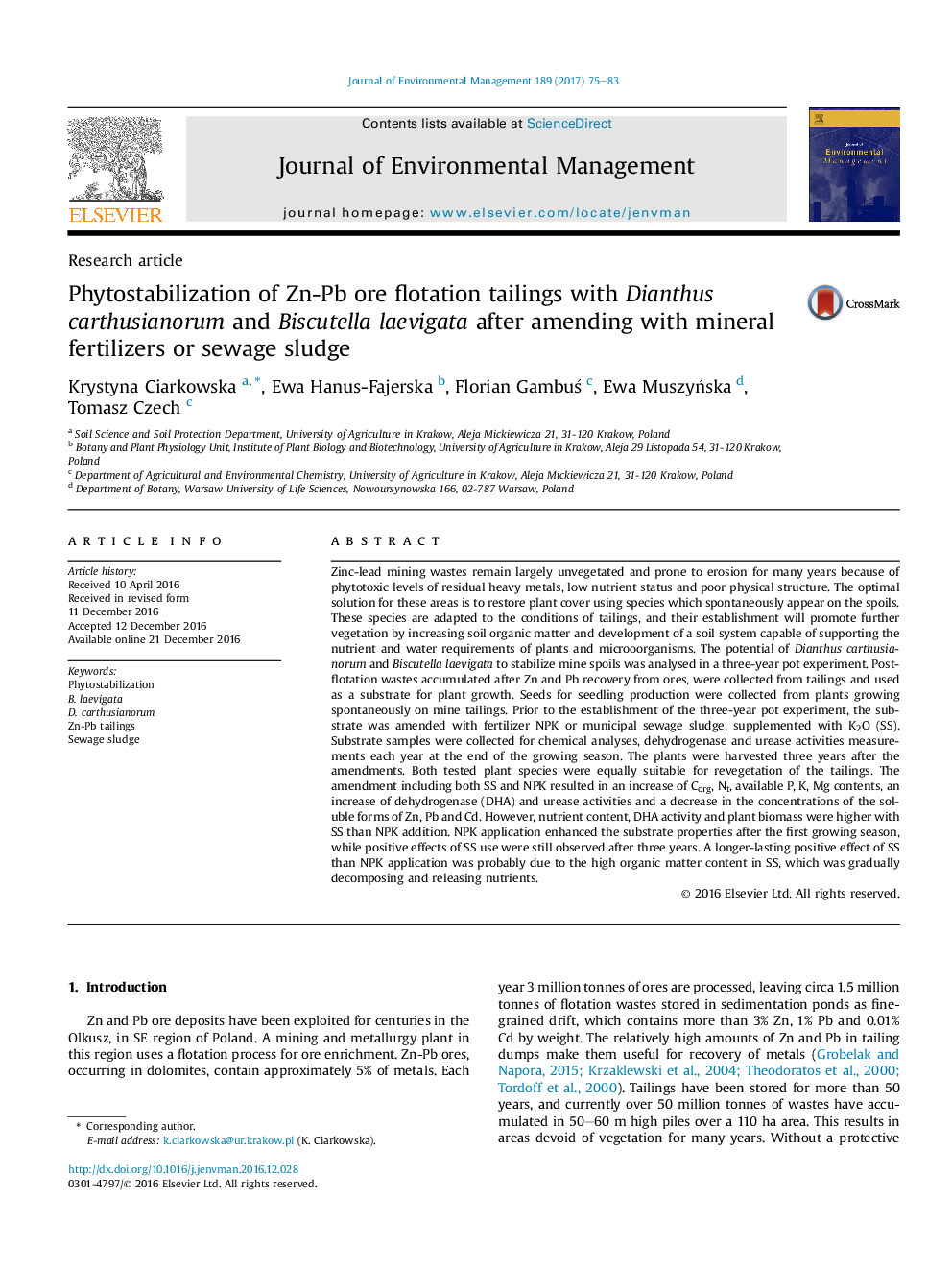| Article ID | Journal | Published Year | Pages | File Type |
|---|---|---|---|---|
| 5117065 | Journal of Environmental Management | 2017 | 9 Pages |
â¢D. cartusianorum and B. laevigata can be used to stabilize mine spoil.â¢Substrate was amended with NPK or sewage sludge (SS) in a three-year pot experiment.â¢Soluble Zn, Pb and Cd decreased after three years of plant growth.â¢SS and NPK increased the Corg, N, P, K, Mg levels and dehydrogenase (DHA) activity.â¢SS maintained higher nutrient levels and DHA activity longer than NPK addition.
Zinc-lead mining wastes remain largely unvegetated and prone to erosion for many years because of phytotoxic levels of residual heavy metals, low nutrient status and poor physical structure. The optimal solution for these areas is to restore plant cover using species which spontaneously appear on the spoils. These species are adapted to the conditions of tailings, and their establishment will promote further vegetation by increasing soil organic matter and development of a soil system capable of supporting the nutrient and water requirements of plants and microoorganisms. The potential of Dianthus carthusianorum and Biscutella laevigata to stabilize mine spoils was analysed in a three-year pot experiment. Post-flotation wastes accumulated after Zn and Pb recovery from ores, were collected from tailings and used as a substrate for plant growth. Seeds for seedling production were collected from plants growing spontaneously on mine tailings. Prior to the establishment of the three-year pot experiment, the substrate was amended with fertilizer NPK or municipal sewage sludge, supplemented with K2O (SS). Substrate samples were collected for chemical analyses, dehydrogenase and urease activities measurements each year at the end of the growing season. The plants were harvested three years after the amendments. Both tested plant species were equally suitable for revegetation of the tailings. The amendment including both SS and NPK resulted in an increase of Corg, Nt, available P, K, Mg contents, an increase of dehydrogenase (DHA) and urease activities and a decrease in the concentrations of the soluble forms of Zn, Pb and Cd. However, nutrient content, DHA activity and plant biomass were higher with SS than NPK addition. NPK application enhanced the substrate properties after the first growing season, while positive effects of SS use were still observed after three years. A longer-lasting positive effect of SS than NPK application was probably due to the high organic matter content in SS, which was gradually decomposing and releasing nutrients.
Graphical abstractDownload high-res image (260KB)Download full-size image
